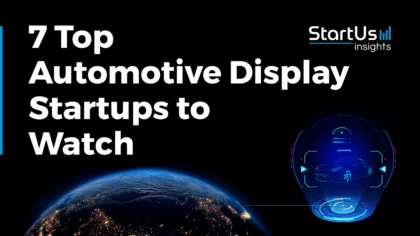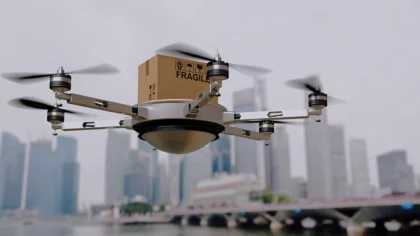Modern automotive vehicles are highly intelligent with a wide range of sensors that collect and process data from in and around the vehicle. Moreover, advances in communication technologies allow vehicles to use this data to communicate with each other and their surrounding infrastructure. Moreover, connected vehicle solutions power traffic management, autonomous vehicles, and more to tackle traffic congestion and road safety concerns in cities. This report provides an overview of connected vehicle trends and innovations ranging from smart sensors and fully autonomous driving to advanced driver assistance systems (ADAS) and sensor fusion. They allow automotive manufacturers and mobility companies to improve passenger safety and experience. Read more to explore how these automotive connectivity trends impact your business.
This article was last updated in July 2024.
Innovation Map outlines the Top 10 Connected Vehicle Trends & 20 Promising Startups
For this in-depth research on the top global connected vehicle trends and startups, we analyzed a sample of 1836 global startups & scaleups. This data-driven research provides innovation intelligence that helps you improve strategic decision-making by giving you an overview of emerging technologies and trends in the automotive industry. In the Connected Vehicle Innovation Map, you get a comprehensive overview of the innovation trends & startups that impact your company.
Top 10 Connected Vehicle Trends (2025)
- Advanced Connectivity
- Smart Sensors
- Vehicle Diagnostics
- Full Self-Driving
- Vehicle-to-Infrastructure (V2I)
- Vehicle-to-Everything (V2X)
- Vehicle-to-Vehicle (V2V)
- Advanced Driver Assistance Systems
- Sensor Fusion
- Human-Machine Interfaces (HMIs)
Want to explore all Connected Vehicles innovations & trends?
These insights are derived by working with our Big Data & Artificial Intelligence-powered StartUs Insights Discovery Platform, covering 4.7M+ startups & scaleups globally. As the world’s largest resource for data on emerging companies, the SaaS platform enables you to identify relevant technologies and industry trends quickly & exhaustively.
Tree Map reveals the Impact of the Top 10 Connected Vehicle Trends
Based on the Connected Vehicle Innovation Map, the Tree Map below illustrates the impact of the Top 10 Connected Vehicle Trends in 2025. Advances in full self-driving technology allow automotive manufacturers to create vehicles that handle complex situations without driver intervention. Connected vehicles generate more data through smart sensors integrated into vehicle interiors and exteriors that improve vehicle diagnostics.
Additionally, connectivity solutions such as 5G, eSIM, and other communication hardware are enabling V2V, V2I, and V2X communication. Improvements in data processing through sensor fusion result in better ADAS capabilities such as accident prevention and lane keeping. Lastly, the demand for HMIs and virtual reality (VR) headsets for in-vehicle entertainment is rising as people spend more time commuting.
Global Startup Heat Map covers 1836 Connected Vehicle Startups & Scaleups
The Global Startup Heat Map below highlights the global distribution of the 1836 exemplary startups & scaleups that we analyzed for this research. Created through the StartUs Insights Discovery Platform, the Heat Map reveals that the US and Europe see the most startup activity.
Below, you get to meet 20 out of these 1836 promising startups & scaleups as well as the solutions they develop. These 20 startups are hand-picked based on criteria such as founding year, location, funding raised, and more. Depending on your specific needs, your top picks might look entirely different.
Top 10 Connected Vehicle Innovation Trends for 2025
1. Advanced Connectivity
Connected cars use the internet to receive vehicle software updates, contact emergency services, connect with other devices and infrastructure, and more. That is why connectivity solutions such as cellular networks and WiFi play a great role in improving the connected car ecosystem. However, the bandwidth and latency limits of conventional communication methods bottleneck the performance of autonomous vehicles.
To overcome this, startups offer tailored chipsets that enable high-speed communication through 5G and decentralized networks. They allow vehicles to leverage near real-time information for improved performance and safety while reducing infrastructure costs.
DynamoEdge advances Chip-To-Cloud Processing
DynamoEdge develops a secure and scalable platform for real-time chip-to-cloud data processing. It distributes machine learning algorithms across the transmission pipeline from the sensor to the cloud. This reduces the massive data costs required for data processing. Additionally, it uses 5G to facilitate high-speed data transfer and finds applications in predicting hardware failures, generating fleet diagnostics, and more.
Airnity improve Automotive Connectivity
French startup Airnity makes a distributed, multi-cloud network platform to provide cost-effective vehicle connectivity. It is a full-mobile virtual network operator (MVNO) that addresses local technical, operational, and regulatory constraints for connected vehicle communication.
The platform also offers enhanced local quality of service (QoS), optimizes cost, and meets both telecom and automotive compliances. This enables vehicle services to integrate vehicle communication infrastructure with minimal disruption.
2. Smart Sensors
Connected vehicles leverage a range of smart sensors such as LiDAR, radar, cameras, and temperature sensors. They enable exterior functions like road monitoring and lane keeping while powering interior tasks such as driver monitoring and climate control. At the same time, the cost of smart sensors and lack of accuracy in long-distance sensing hinders its widespread adoption across in the automotive sector.
To tackle this, startups create LiDAR and radar solutions that improve connected vehicle functions. They improve sensing performance irrespective of weather conditions and maintain high accuracy even at great distances while being economical.
Scantinel Photonics offers Long-Range LiDAR
German startup Scantinel provides a LiDAR on a chip solution that features over 300 meters detection range. The startup’s patented frequency-modulated continuous-wave (FMCW) LiDAR utilizes an optical enhanced array (OEA) system to provide long-range, high-clarity scans.
Additionally, it combines lasers, detectors, and a large part of the optical components on a silicon wafer to reduce costs and the form factor. This enables autonomous vehicle makers to build accurate driving systems while keeping them affordable.
Axon Pulse aids Radar Signal Processing
Axon Pulse is an Israeli startup specializing in deep neural networks for automotive radar signal processing. The startup’s solution, DeePulse, leverages various types of radar data, including time-doppler representations and high-resolution point clouds, for AI-based target classification.
Its neural networks improve automotive radar sensitivity and range, resolution, and separation, as well as detection and tracking, improving performance in complex scenarios and severe weather conditions.
3. Vehicle Diagnostics
Vehicle diagnostic testing is critical to identify vehicle faults and notify drivers before it becomes a hazard. Connected vehicles utilize smart sensors to continuously monitor fuel levels, tire pressure, engine health, transmission, and more.
Combining advanced analytics with this data provides critical insights into vehicle conditions and enables preventative maintenance. Moreover, telematics functions enabled by diagnostic sensors allow fleet operators to monitor all aspects of their vehicle fleets from a single point.
Wonder Wagen simplifies Fuel Monitoring
Wonder Wagen is an Indian startup that develops W2 SMART FUEL, a fuel monitoring system. It features live fuel tracking, fuel theft alerts, refueling alerts, and real-time vehicle location tracking. The startup provides fuel level sensors and devices that are compatible with a range of vehicles that also offers driver behavior analytics. Wonder Wagen’s solution thus assists fleet managers in improving fuel efficiency while enabling drivers to monitor engine conditions and fuel levels.
Car Kenny advances Smart Vehicle Security
US-based startup Car Kenny creates an all-in-one vehicle telematics security platform. It provides drivers with remote access to GPS information, a remote lock/unlock system, electric vehicle (EV) charging status, and vehicle health checks.
Through the startup’s companion app, users are able to download and share car data as well as schedule routine vehicle maintenance. Car Kenny’s solution provides individual users and fleet operators with vehicle status.
4. Full Self-Driving
The lack of accuracy, low detection range, and high costs of existing autonomous driving systems affect the mass adoption of autonomous vehicles. However, advances in smart sensors and deep learning tackle these issues and improve the performance of full self-driving systems. They improve road safety and the availability of productive time for vehicle drivers and occupants.
Additionally, LiDAR, radar, sensor fusion algorithms, and high-performance computing (HPC) enable autonomous vehicles to drive in severe weather conditions with more reliability than human drivers.
Minus Zero manufactures Autonomous Shuttles
Indian startup Minus Zero makes autonomous shuttles. The startup combines camera-based perception and image processing algorithms to mitigate the need for LiDAR, reducing computing power requirements.
The startup’s AI perceives surroundings and detects drivable areas and moving objects. Moreover, it supports navigation in poor road infrastructure and stochastic traffic conditions.
Kodiak Robotics provides Self-Driving Trucks
Kodiak Robotics is a US-based startup that builds self-driving trucks. The trucks leverage an array of sensors, sensor fusion, and a mapping system to view their surroundings. Computing units in the trucks then send data to steering columns, brakes, and throttles to safely move the truck. Unlike other solutions, Kodiak Robotics’ solution utilize all sensors in equal priority, which maximizes performance.
5. Vehicle-to-Infrastructure
V2I solutions provide travelers with real-time road condition information in smart cities. Moreover, innovations in the internet of things (IoT) allow vehicles to communicate with a wider range of public infrastructure. Currently, the main limitation of V2I applications is the lack of smart public infrastructure.
Moreover, the applications of V2I go beyond traffic management from alerts for accidents and parking availability to emergency services.
Chorus Mobility enables Automatic Toll Payments
Chorus Mobility is a US-based startup that provides automatic toll payments. The startup’s solution utilizes blockchain-based peer-to-peer (P2P) payment protocols to automate toll payments from autonomous vehicles. Besides, it features off-chain protocols for instant payments to and from decentralized agents.
Connected Wise aids V2I Communication
US-based startup Connected Wise provides a vehicle-to-infrastructure connected vehicle platform. It enables vision-based communication between smart traffic signs and connected vehicles. The platform processes smart traffic signs with visual identifiers and an onboard machine vision system. Through this mechanism, the onboard unit supports infrastructure-to-vehicle communication, improving the safety of autonomous vehicles.
6. Vehicle-to-Everything
V2X technology enables vehicles to communicate with other vehicles, infrastructure, and pedestrians. This provides better situational awareness for autonomous vehicles to improve navigational performance while improving overall road safety. However, the cost associated with V2X systems greatly impacts their adoption in cities. Even then, owners of older vehicles still need to buy V2X-ready vehicles to better utilize the technology.
To tackle these issues, startups & scaleups develop cost-effective plug-and-play V2X solutions and tailored V2X systems. This allows manufacturers and cities to mitigate in-house product development and accelerate time to market.
Huali Zhixing builds Intelligent City Roads
Chinese startup Huali Zhixing uses perception data of roadside video, radar, weather, and other detectors to optimize traffic. The startup’s connected roads leverage vehicle-road collaboration technology to receive information in high-speed scenarios. The combined data analysis from road and vehicle sensors enables cities to achieve special vehicle priority and green wave traffic.
ConnVAS provides Intelligent Intersection Solutions
ConnVAS, an Israeli startup, specializes in edge computing solutions that transform signalized intersections into intelligent hubs using the V2X protocol. Its ConnVAS Edge Computing Platform (CECP) analyzes real-time data from cameras and traffic controllers, leveraging AI to detect traffic objects. CECP synchronizes with traffic controllers, generating alarms and adjusting behavior in response to complex traffic scenarios. Moreover, ConnVAS’ V2X-based transceivers provide alerts for connected vehicles, 5G mobile users, and crosswalk pedestrians, enhancing collision avoidance, traffic flow management, and pedestrian safety.
7. Vehicle-to-Vehicle
V2V communication provides information to intelligent transportation systems for traffic management and enables data exchange between vehicles to prevent accidents. Presently, issues like the privacy of individual driver data and security vulnerabilities in networks, hinder the adoption of V2V systems.
Moreover, low-latent communication networks are critical to ensure real-time data transfer between vehicles. For these reasons, startups are offering V2V hardware and software solutions that ensure real-time communication and data analysis.
Husarnet provides V2V Networking Infrastructure
Husarnet is a Polish startup that develops software-defined networks (SDN). The startup uses P2P communication to send traffic data over the network. The data is encrypted before it leaves the devices with perfect forward secrecy (PFC). Moreover, devices on the network communicate directly over the internet using the lowest latency path.
Husarnet’s smart city infrastructure solution thus allows vehicles to communicate with each other using standard cellular networks, reducing implementation costs.
EtechStars offers AI-Controlled Autonomous Vehicles
EtechStars, an Indian startup, manufactures AI-controlled self-driving vehicles, ensuring safe and autonomous mobility. It integrates sensors, AI, and machine learning to detect and interpret surroundings, enabling informed autonomous driving decisions.
The startup’s solution relies on a global positioning system (GPS) and high-definition maps to deliver precise location and route information. EtechStars’ vehicle-to-vehicle (V2V) and vehicle-to-infrastructure (V2I) communication enhance road safety and optimize efficiency.
8. Advanced Driver Assistance Systems
ADAS leverages active and passive safety systems to minimize manual errors during driving. Current driver assistance systems use sensors for cruise control, automated lighting, crash detection and avoidance, lane keeping, blind spot monitoring, and more.
Its current limitations include a lack of judgment accuracy and high installation costs, making many vehicle owners turn away from ADAS. As a result, startups are developing virtual environments to train vehicle systems to avoid incorrect judgments and AI-based driver monitoring to enhance ADAS performance.
WingDriver provides Smartphone-based Driver Monitoring
US-based startup Wingdriver develops a computer vision and AI-based driver monitoring solution. It uses drivers’ smartphone front cameras to detect pre-sleep, distraction, stress, emotions, fatigue, and actions.
On the other hand, back cameras monitor the road and surroundings in front of the vehicle to analyze tailgating, lane keeping, and braking assistance. It then provides real-time in-cab alerts to improve driver awareness and safety.
AVES Reality improves ADAS Training
AVES Reality is a German startup that develops 3D digital twins of locations to train ADAS solutions. The startup uses satellite images and AI to create 3D content on a large scale. Moreover, it extracts insights from high-resolution satellite imagery with geospatial analytics to detect buildings, vegetation, and road features.
ADAS developers utilize the startup’s digital twins to train in simulated virtual environments with infinite numbers of variations of a single scene, improving accuracy.
9. Sensor Fusion
Autonomous vehicles require various sensors like cameras, radar, and LiDAR due to the low reliability of using a single type of sensor. Consequently, this demands higher onboard processing power in vehicles as delays in data processing could significantly affect navigational decisions, leading to accidents.
Autonomous vehicles thus use specialized sensor fusion chips and algorithms that process data from multiple sensors at high speed. They allow vehicle manufacturers to ensure maximum navigational efficiency without system redesign.
AIWaysion advances Smart Transportation
US-based startup AIWaysion makes a smart mobility platform that combines computer vision and sensor fusion. It utilizes multiple sensors such as cameras, MAC address detectors, and environment sensors with AI and edge computing to process data at the edge.
The startup’s mobile unit for sensing traffic (MUST) hardware integrates sensing, analysis, and communication to provide real-time traffic management data. In addition to this, AIWaysion’s software provides connected vehicles with road information for their ADAS functions.
Arctictern develops ADAS Algorithms
Arctictern is a German startup that develops ADAS algorithms to assist drivers in driving and parking. The startup’s ADAS algorithms support object detection and tracking, 3D scenario simulation, motion modeling, pattern recognition, and sensor fusion, accelerating level 5 fully autonomous vehicle development.
10. Human-Machine Interfaces
The traffic infrastructure in modern cities is rapidly reaching and exceeding its capacity to handle vehicles. This leads to vehicle occupants spending more time inside their vehicles due to traffic congestion. The automotive industry is developing autonomous vehicles to provide drivers with the freedom to perform productive tasks while en route to their destination.
At the same time, there is a growing interest in passenger-facing HMIs for entertainment and travel data. Human-machine interfaces also serve as a marketing platform for companies to drive customer engagement.
Eloy offers Connected Car Solutions
Eloy, a UK-based startup provides connected vehicle products. Its EloyMessage delivers fixed or dynamic visual and audio messages directly to vehicles. This mitigates driver distraction through patented technology. EloySignals leverages AI to enhance traffic flow by advising drivers on stopping or proceeding. The priority is given to emergency vehicles and vulnerable road users.
Further, EloyPark optimizes parking efficiency by directing vehicles to available spaces, while EloyRoute generates fixed routes and dynamic diversions to manage traffic flow effectively, avoiding congestion and hazards. EloyTrack monitors real-time routes and vehicles, identifying congestion hotspots. These solutions benefit traffic managers, urban planners, and drivers, improving overall traffic flow and driving experiences.
Holoride develops an XR Entertainment System
Holoride is a German startup creating an entertainment system that combines navigational data with extended reality (XR). Its main features include in-game motion that syncs with the driver’s driving as well as traffic and location awareness.
Further, the system combines a world layer, a 2d layer, and a vehicle layer to construct immersive in-vehicle experiences. Passengers are thus able to experience in-car gaming or video experiences with motion synchronization in real time.
Discover all Connected Vehicle Trends, Technologies & Startups
As high-performance computing continues to grow, connected autonomous vehicles will be able to quickly process more data from sensors. Advances in AI, deep learning, and sensor fusion will greatly impact the performance of autonomous vehicles. Moreover, IoT implementation in public infrastructure will provide better situational awareness to connected vehicles, improving road safety.
The Connected Vehicle Trends & Startups outlined in this report only scratch the surface of trends that we identified during our data-driven innovation and startup scouting process. Among others, neural networks, 5G, and sensor fusion are some of the connected car future trends that will transform the sector as we know it today.
Identifying new opportunities and emerging technologies to implement into your business goes a long way in gaining a competitive advantage. Get in touch to easily and exhaustively scout startups, technologies & trends that matter to you!
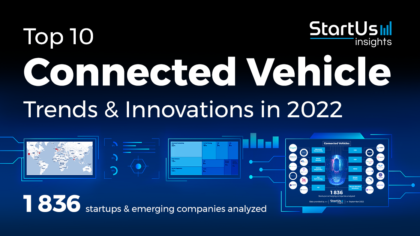
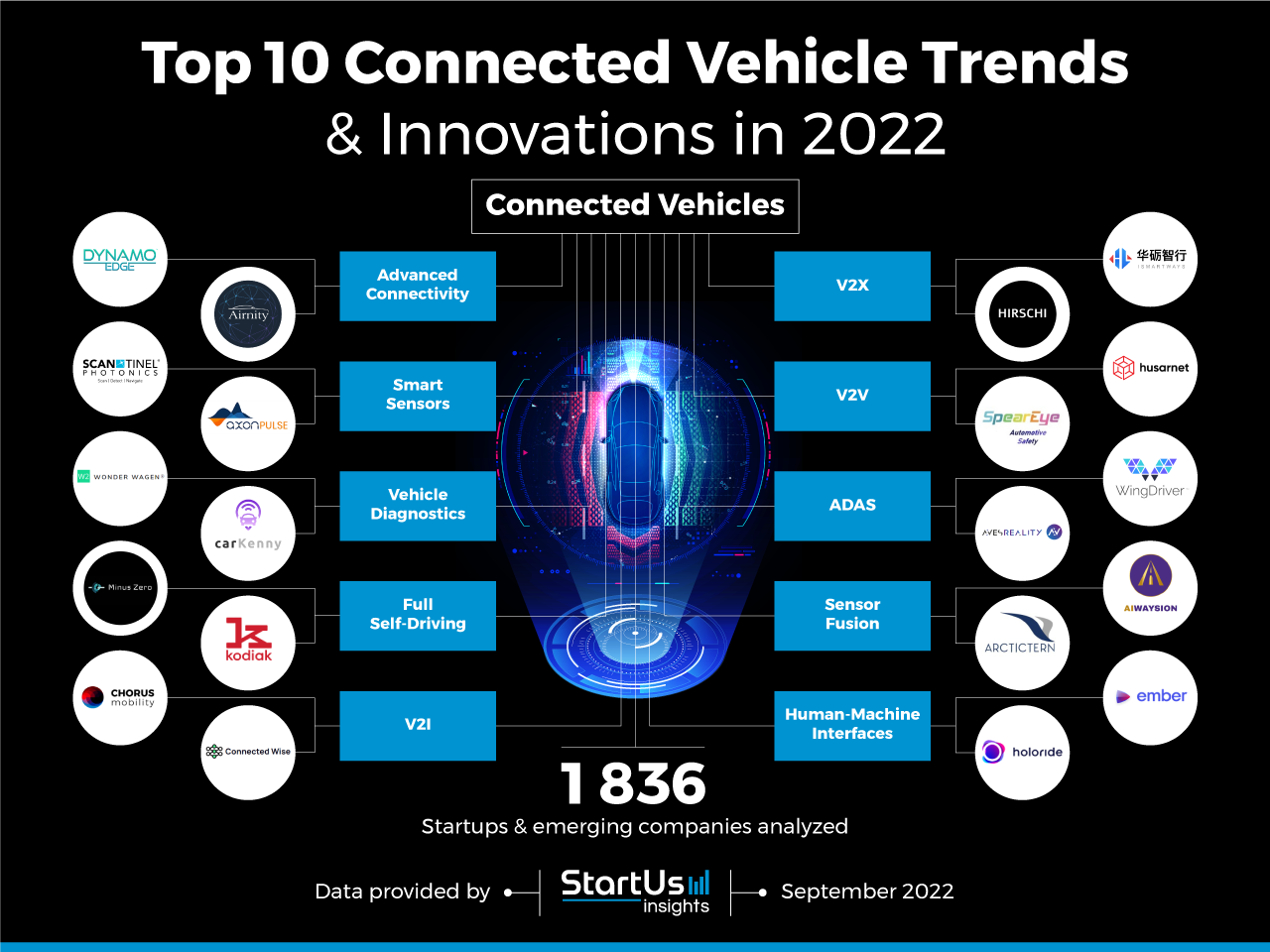
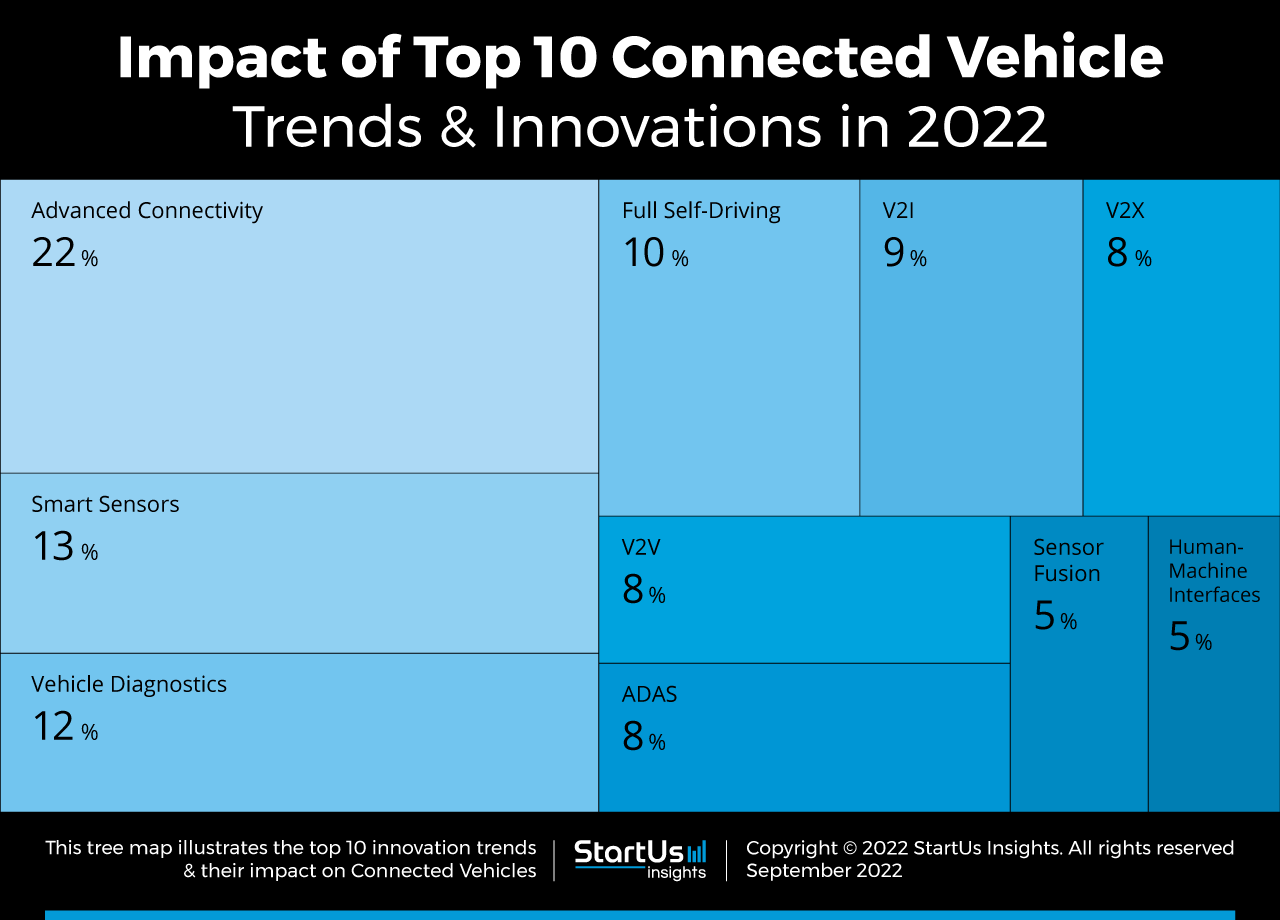
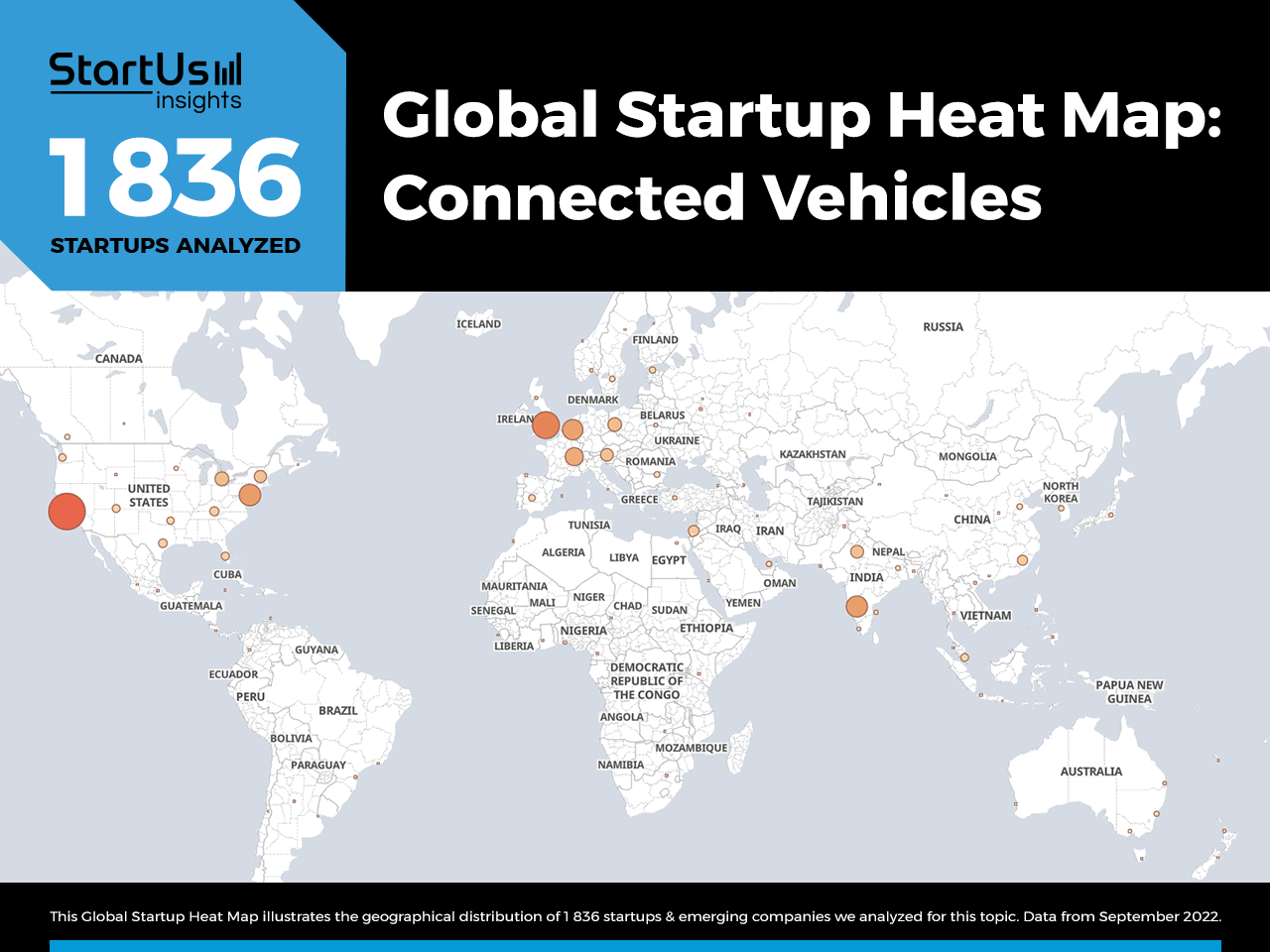

![Essential Guide to Digital Transformation in the Automotive Industry [2025 & Beyond]](https://www.startus-insights.com/wp-content/uploads/2024/12/Digital-Transformation-in-Automotive-SharedImg-StartUs-Insights-noresize-420x236.webp)
